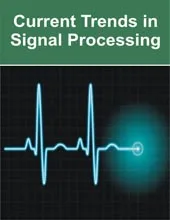[{“box”:0,”content”:”[if 992 equals=”Open Access”]n
n
Open Access
nn
n
n[/if 992]n
n
n
n
n

n
Manish Dubey, Rishita Aloria, Prakshal Rohatgi, Tanya Arora, Pranshul Jain
n
- n t
n
n
n[/foreach]
n
n[if 2099 not_equal=”Yes”]n
- [foreach 286] [if 1175 not_equal=””]n t
- Professor,, Student,, Student,, Student,, Student, Department of Computer Engineering, Poornima College of Engineering, Jaipur,, Department of Computer Engineering, Poornima College of Engineering, Jaipur,, Department of Computer Engineering, Poornima College of Engineering, Jaipur,, Department of Computer Engineering, Poornima College of Engineering, Jaipur,, Department of Computer Engineering, Poornima College of Engineering, Jaipur, Rajasthan,, Rajasthan,, Rajasthan,, Rajasthan,, Rajasthan, India, India, India, India, India
n[/if 1175][/foreach]
n[/if 2099][if 2099 equals=”Yes”][/if 2099]n
Abstract
nGrowing healthy and productive crops is crucial in the global battle for food security. To minimize crop losses and apply timely control measures, early and precise diagnosis of plant diseases is essential. Conventional illness detection techniques are subjective, labor-intensive, and complicated; they frequently rely on eye inspection. The TensorFlow and OpenCV libraries are used in this study to explore the use of Convolutional Neural Networks (CNNs) for plant disease discovery. The suggested method uses CNNs’ ability to automatically identify distinguishing characteristics from leaf photos to classify diseases. An extensive dataset of photos of plant leaves, including both healthy and damaged leaves from different plant species, was gathered and pre-processed with the use of image augmentation methods to improve the robustness of the model. Carefully crafted CNN. TensorFlow was used to create the model, which used fully connected layers for disease classification and convolutional and pooling layers for feature extraction. After undergoing extensive training and evaluation, the model was able to classify different plant diseases with an accuracy of 94.2%. In addition to proving that CNNs are a useful tool for identifying plant diseases, this study investigates possible uses in the future, such as real-time disease diagnosis in mobile apps and integration with crop breeding initiatives to produce crops resistant to disease.
n
Keywords: Plant disease detection, Convolutional Neural Networks (CNNs), TensorFlow, OpenCV, Deep learning, Image classification, Precision agriculture, Sustainable agriculture.
n[if 424 equals=”Regular Issue”][This article belongs to Current Trends in Signal Processing(ctsp)]
n
n

n
n
n
nn[if 992 equals=”Open Access”] Full Text PDF Download[/if 992] n[if 992 not_equal=”Open Access”]
[/if 992]n[if 992 not_equal=”Open Access”] nnn[/if 992]nn[if 379 not_equal=””]n
Browse Figures
n
n
n[/if 379]n
References
n[if 1104 equals=””]n
- Pandey, P., et al. “Deep learning for smart agriculture: Applications and challenges.” Artificial intelligence in agriculture (2019): 141-170.
- Jeong, Y. S., et al. “Deep learning for disease detection in plants.” Computers and Electronics in Agriculture 144 (2017): 91-99.
- Saponaro, G., et al. “Hyperspectral imaging and deep learning for early disease detection in precision agriculture.” Remote sensing 11.7 (2019): 821.
- LeCun, Y., et al. “Gradient-based learning applied to document recognition.” Proceedings of the IEEE 86.11 (1998): 2278-2324.
- Krizhevsky, A., et al. “Imagenet classification with deep convolutional neural networks.” Advances in neural information processing systems (2012): 1097-1105.
- Abadi, M., et al. “TensorFlow: Large-scale machine learning on heterogeneous systems.” arXiv preprint arXiv:1605.08803 (2016).
- OpenCV (Open-Source Computer Vision Library). https://opencv.org/
- Li, Z., et al. “A convolutional neural network cascade for apple leaf disease detection.” Computers and Electronics in Agriculture 145 (2018): 125-134.
- Mohanty, S. P., et al. “Using deep learning for image-based plant disease detection.” Frontiers in plant science 7 (2016): 1414.
- Saponaro, G., et al. “Transfer learning for leaf disease classification using convolutional neural networks.” Computers and Electronics in Agriculture 167 (2020): 105107.
- Sharifi, A., et al. “Deep learning image recognition for plant disease detection.” Computers and Electronics in Agriculture 169 (2020): 106071.
Pandey, P., et al. “Deep learning in agriculture: A review.” Agricultural Reviews 39.4 (2018): 638-
nn[/if 1104][if 1104 not_equal=””]n
- [foreach 1102]n t
- [if 1106 equals=””], [/if 1106][if 1106 not_equal=””],[/if 1106]
n[/foreach]
n[/if 1104]
nn
nn[if 1114 equals=”Yes”]n
n[/if 1114]
n
n
n
| Volume | 15 | |
| [if 424 equals=”Regular Issue”]Issue[/if 424][if 424 equals=”Special Issue”]Special Issue[/if 424] [if 424 equals=”Conference”][/if 424] | 01 | |
| Received | April 25, 2024 | |
| Accepted | May 27, 2024 | |
| Published | June 14, 2024 |
n
n
n
n
n
n function myFunction2() {n var x = document.getElementById(“browsefigure”);n if (x.style.display === “block”) {n x.style.display = “none”;n }n else { x.style.display = “Block”; }n }n document.querySelector(“.prevBtn”).addEventListener(“click”, () => {n changeSlides(-1);n });n document.querySelector(“.nextBtn”).addEventListener(“click”, () => {n changeSlides(1);n });n var slideIndex = 1;n showSlides(slideIndex);n function changeSlides(n) {n showSlides((slideIndex += n));n }n function currentSlide(n) {n showSlides((slideIndex = n));n }n function showSlides(n) {n var i;n var slides = document.getElementsByClassName(“Slide”);n var dots = document.getElementsByClassName(“Navdot”);n if (n > slides.length) { slideIndex = 1; }n if (n (item.style.display = “none”));n Array.from(dots).forEach(n item => (item.className = item.className.replace(” selected”, “”))n );n slides[slideIndex – 1].style.display = “block”;n dots[slideIndex – 1].className += ” selected”;n }n”}]


